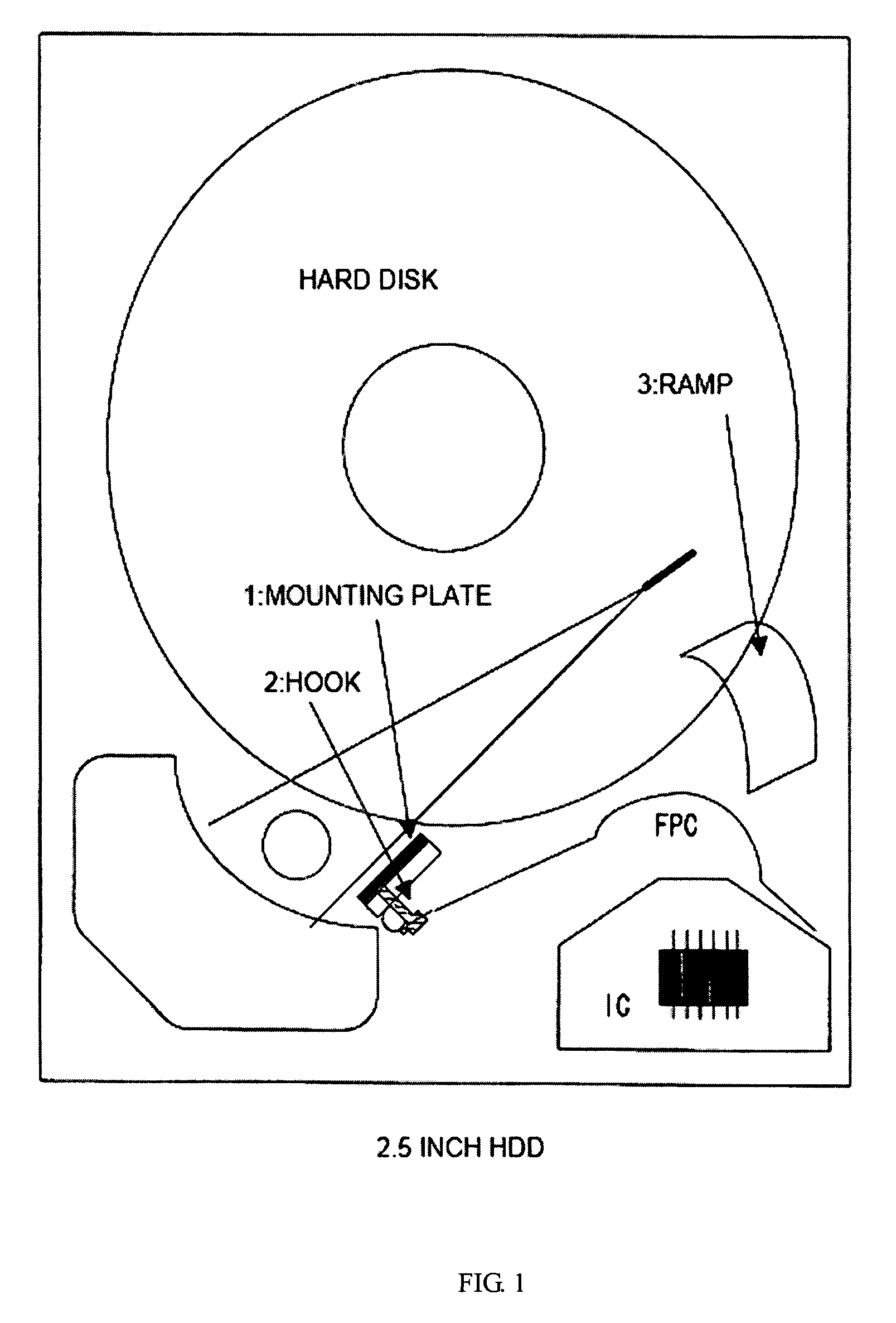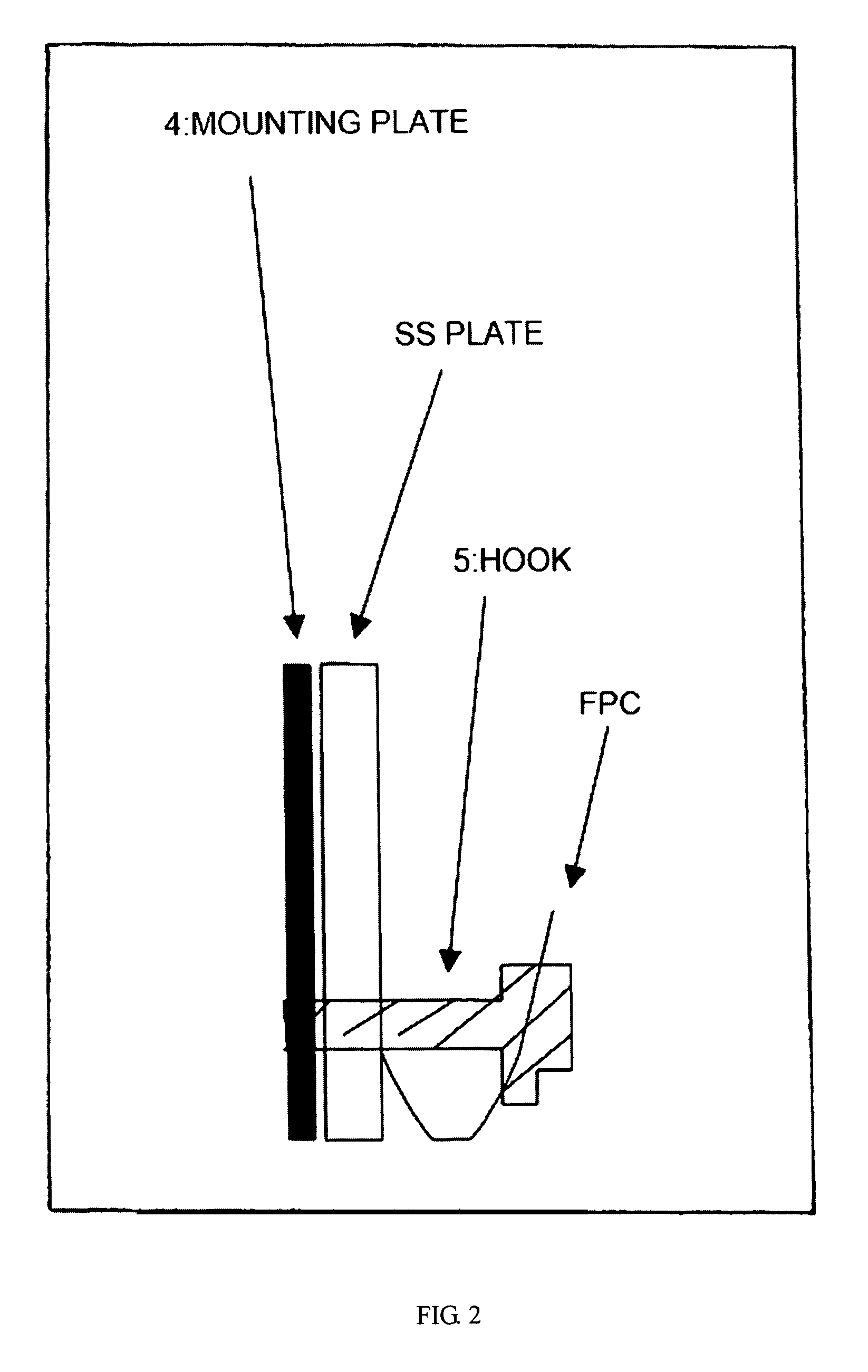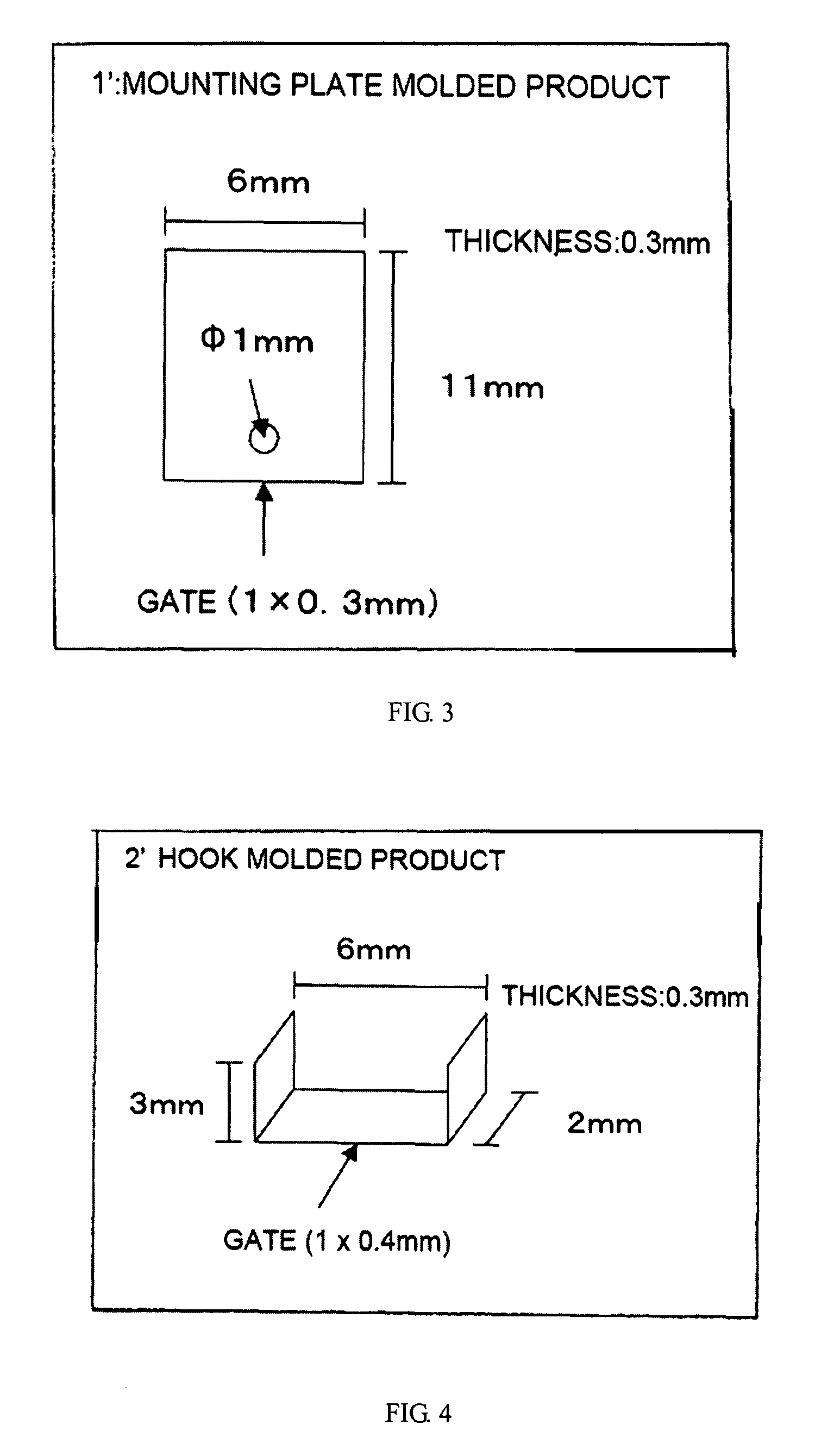Inner part of hard disk drive
a hard disk drive and inner part technology, applied in the field of inner parts of hard disk drives, can solve the problems of insufficient low outgassing properties, insufficient water absorption properties, and insufficient materials to exhibit low outgassing properties, and achieve low ionic contamination properties, low particulate contamination properties, and low outgassing properties. good balance
- Summary
- Abstract
- Description
- Claims
- Application Information
AI Technical Summary
Benefits of technology
Problems solved by technology
Method used
Image
Examples
production example 1
Production Example of Polyphenylene Ether (PPE-1)
[0090]After subjecting 2,6-dimethylphenol to oxidation polymerization in a toluene solvent in the presence of a catalyst, the polymer was precipitated by adding methanol and collected by filtration. The polymer was dried at about −0.1 MPa for about seven hours using a vacuum dryer (VOS-601SD manufactured by Tokyo Rikakikai Co, Ltd.) set at 140° C. to obtain a poly(2,6-dimethyl-1,4-phenylene ether) powder. The reduced viscosity (0.5 g / dl, chloroform solution, measured at 30° C.) of the powder was 0.41, and the residual volatile content was about 1700 ppm.
production example 2
Production Example of Polyphenylene Ether (PPE-2)
[0091]After subjecting 2,6-dimethylphenol to oxidation polymerization in a toluene solvent in the presence of a catalyst, the polymer was precipitated by adding methanol and collected by filtration. The polymer was dried at about −0.1 MPa for about two hours using a vacuum dryer (VOS-601SD manufactured by Tokyo Rikakikai Co, Ltd.) set at 140° C. to obtain a poly(2,6-dimethyl-1,4-phenylene ether) powder. The reduced viscosity (0.5 g / dl, chloroform solution, measured at 30° C.) of the powder was 0.41, and the residual volatile content was about 19,000 ppm.
production example 3
Production Example of Liquid Crystal Polyester (LCP-1)
[0092]p-Hydroxybenzoic acid, 2-hydroxy-6-naphthoic acid, and acetic anhydride were melted by heating and polycondensed in a nitrogen atmosphere to obtain liquid crystal polyester (LCP-1) having the following theoretical structural formula. The component ratio of the composition indicates the molar ratio.
[0093]
[0094]Each resin composition was injection-molded and the properties of the resulting molded product were evaluated according to the following methods.
(1) Molding
[0095]Pellets obtained by melt-mixing were injection-molded using an injection molding machine (EC60 manufactured by Toshiba Machine Co., Ltd.) at a cylinder temperature of 335° C., a mold temperature of 150° C., an injection speed of 300 mm / sec (maximum injection pressure: 260 MPa), and a holding pressure of 250 MPa (0.2 sec) / 200 MPa (1.0 sec). A mounting plate molded product (FIG. 3, approximately 6 mm×11 mm×0.3 mm) and a hook molded product (FIG. 4, approximately...
PUM
| Property | Measurement | Unit |
|---|---|---|
| barrel inner diameter | aaaaa | aaaaa |
| temperature | aaaaa | aaaaa |
| mold temperature | aaaaa | aaaaa |
Abstract
Description
Claims
Application Information
 Login to View More
Login to View More - R&D
- Intellectual Property
- Life Sciences
- Materials
- Tech Scout
- Unparalleled Data Quality
- Higher Quality Content
- 60% Fewer Hallucinations
Browse by: Latest US Patents, China's latest patents, Technical Efficacy Thesaurus, Application Domain, Technology Topic, Popular Technical Reports.
© 2025 PatSnap. All rights reserved.Legal|Privacy policy|Modern Slavery Act Transparency Statement|Sitemap|About US| Contact US: help@patsnap.com



